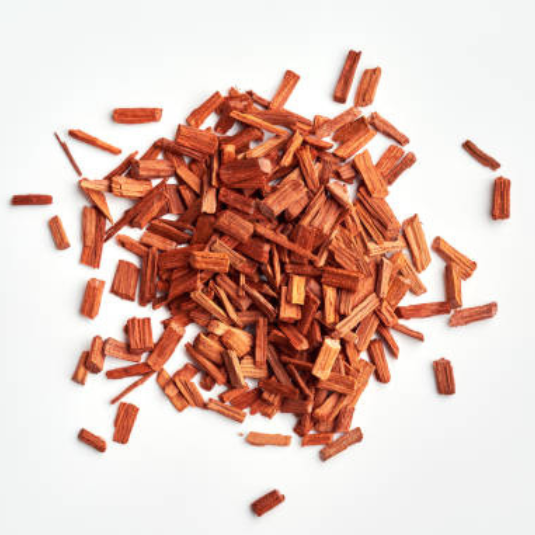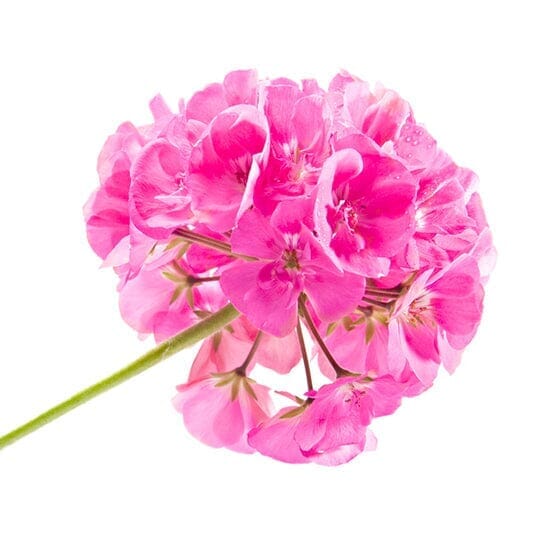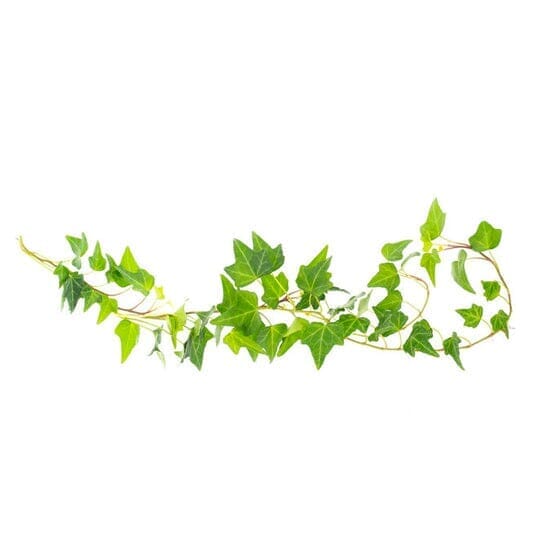What does the word mousse mean?
The plant known as moss is a non-vascular plant, characterized by its small size and lack of true roots, stems, and leaves. It is called "non-vascular" because it does not contain sap. It generally grows in moist, shaded environments.
In ancient Greek, it is called “bryophyta.” “Bryo” means “moss” and “phyta” means plant. This name was chosen to describe the group of non-vascular plants that includes mosses, liverworts, and hornworts.
In the beginning…
Moss has been around for a long time on Earth, as the oldest fossil of this plant discovered is 400 million years old! It is considered one of the earliest land plants.
Mosses evolved from ancient green algae that successfully colonized land surfaces. At that time, our planet presented unique challenges, such as limited water availability and a lack of nutritious soil. To survive, mosses had to develop the ability to absorb water and nutrients through their tissues, as well as retain moisture. Over time, they learned to survive in moist, shaded habitats such as forests, swamps, and polar regions.
Today, there are between 12,000 and 15,000 species of moss in the world, the most widespread being peat moss, feather moss and sphagnum moss.
DID YOU KNOW? Moss grows very slowly compared to other plants. Some types of moss only grow one to two centimeters per year! This means that moss can take decades, even centuries, to form vast moss mats in nature.
Moss cultivation
Today, moss is recreated through accords or synthetic molecules to minimize the environmental impact of perfumery. However, for decades, moss harvesting was a real organization that we invite you to discover with us!
While moss was cultivated in many parts of the world, some areas were more renowned than others for their moss production. Some of the main producing areas include Scandinavia, Scotland, and the British Isles. These regions offer ideal conditions for moss growth, such as cool, humid climates and lush green landscapes.
To plant moss, spores are scattered on a suitable, moist substrate and then appropriate light and humidity conditions are maintained to encourage germination and growth.
What you need to know to ensure good foam development:
• Humidity is essential because moss depends on water to absorb nutrients and grow. It prefers humid environments and can dehydrate easily in dry conditions. Therefore, regular watering or having a constant water source is crucial to maintain adequate humidity.
• Moss generally prefers partial shade or indirect light. Direct exposure to intense sunlight can burn and dry it out, so soft, diffused light is best for optimal growth.
• It is essential to choose the right substrate for the moss to grow on. Moss generally prefers acidic soils rich in organic matter. They must be sufficiently permeable to allow water drainage, while retaining enough moisture to nourish the moss.
Once these conditions are in place, the moss grows slowly but surely. The spores germinate and give rise to tiny filaments that gradually branch out and spread, creating a dense blanket of moss. Over time, it can spread over various surfaces, such as soil, rocks, tree trunks, or even man-made structures.
There were several methods for harvesting moss. For small quantities, hand harvesting was often the most practical. This involved gently lifting pieces of moss from the surface on which they were growing. Tools such as a knife or spatula could also be used to loosen the moss from its surface. For large-scale harvests, however, it was more common to use a moss vacuum. These devices allowed the moss to be removed by gently sucking it up, minimizing damage to the plant and its surroundings.
The different species of moss
• Sphagnum : Sphagnum is one of the most well-known types of plant moss. It is often found in peat bogs and swamps. Sphagnum has a very high water absorption capacity and is often used as a base material in plant cultivation, the manufacture of padding, and even as an absorbent medical dressing.
• Polytric : Mosses of the genus Polytric are characterized by their tall, upright stems and serrated leaves. They are often found in humid forests and wooded areas, forming dense mats on the ground. Polytric is a resilient moss that can withstand harsh environmental conditions.
• Hypnum : Hypnum is a common moss that grows on rocks, tree trunks, and forest floors. It has a delicate appearance with thin, branching leaves. Hypnum is often used in Zen gardens and terrariums to create a natural, verdant look.
• Evernia prunastri: This species was most commonly used in perfumery. It grows on the branches and trunks of trees, especially oaks, hence its common name “oak moss.” It appears in the form of branched, flat fronds, gray-green to silver-gray in color, with a rough, leathery texture. It is especially appreciated for its woody, slightly smoky fragrance.
What did you know about foam in perfumery?
Mosses, particularly oak mosses, were once used as natural ingredients in many perfumes. However, to protect the environment and biodiversity, the perfume industry has developed synthetic alternatives and specific accords to eliminate the need for natural moss.
Perfumers sometimes use synthetic molecules to reproduce the woody , earthy , and slightly smoky notes of natural moss. They allow them to create fragrance compositions with a natural and authentic dimension, capturing the essence of the moss in a controlled and lasting manner. These synthetic molecules offer a precise and controlled alternative to the use of natural moss in perfumery.
In addition to reproducing the fragrance of moss with synthetic molecules, perfumers sometimes create accords of multiple ingredients. To recreate the olfactory accord of moss, components such as vetiver, patchouli, cedar, and seaweed can be used. Vetiver, with its earthy and woody nuances, is often used to evoke the natural appearance of moss. Patchouli and cedar can add woody notes. These ingredients are combined with care and precision by perfumers to recreate the olfactory accord of moss, ensuring that they harmonize and complement each other to achieve the desired result. The goal is to create an olfactory impression that evokes the presence of moss, while also providing a pleasant and interesting fragrance experience.
GOOD TO KNOW !
Moss can be used in a thousand different ways. Aesthetically, it brings natural beauty and elegance to different environments, whether in interior design, floral arrangements, or vertical gardens. By retaining moisture, it is an ideal choice for gardens and terrariums. Furthermore, moss also contributes to sound insulation by reducing echoes and improving the acoustics of indoor spaces thanks to its porous structure. It can play a role in air purification by filtering particles and eliminating toxins. Finally, it promotes biodiversity by providing a habitat for various species and contributes to soil preservation by preventing erosion.
UNUSUAL! Moss has a truly astonishing absorption capacity, capable of absorbing up to 20 times its weight in water! This absorption capacity allows it to retain water for long periods of time, making it an excellent material for retaining moisture in dry environments.
Some legendary foamy fragrances...
As you can see, moss plays a significant role in perfumery. Some famous fragrances contain it in their composition, whether natural or synthetically reproduced. Among the well-known moss perfumes, we can cite:
• Eau de Rochas Cologne. The legendary fragrance of perfumery, this eau de toilette based on a combination of citrus and floral notes has base notes combining oak moss, myrrh and patchouli, thus providing depth to the whole.
• Mitsouko Eau de Parfum by Guerlain. Launched over a century ago, this fragrance opens with fresh, fruity top notes of lemon, bergamot, jasmine, and rose, before melting into a heart of lilac, peach, and ylang-ylang. The warm, woody base is dominated by cinnamon, joined by amber, vetiver, and moss.
• Light Blue pour Homme by Dolce & Gabbana captures the seductive spirit of the Latin lover with notes of Sicilian citrus, Sichuan pepper, and oakmoss. Modern, elegant, and sensual, this fragrance embodies the irresistible charm of the Dolce & Gabbana man, offering a sophisticated olfactory experience.
• Acqua Di Scandola by Parfum d'Empire , a perfume by Marc-Antoine Corticchiato, is intended as a tribute to Corsica. Its iodized, mineral and aromatic notes evoke Mediterranean nature. Lemon, raspberry, oak moss and patchouli blend to create an unforgettable trail.
Now that you know everything about mousse in perfumery, don't hesitate to visit our website to learn more about other ingredients or to come see us directly in store!










